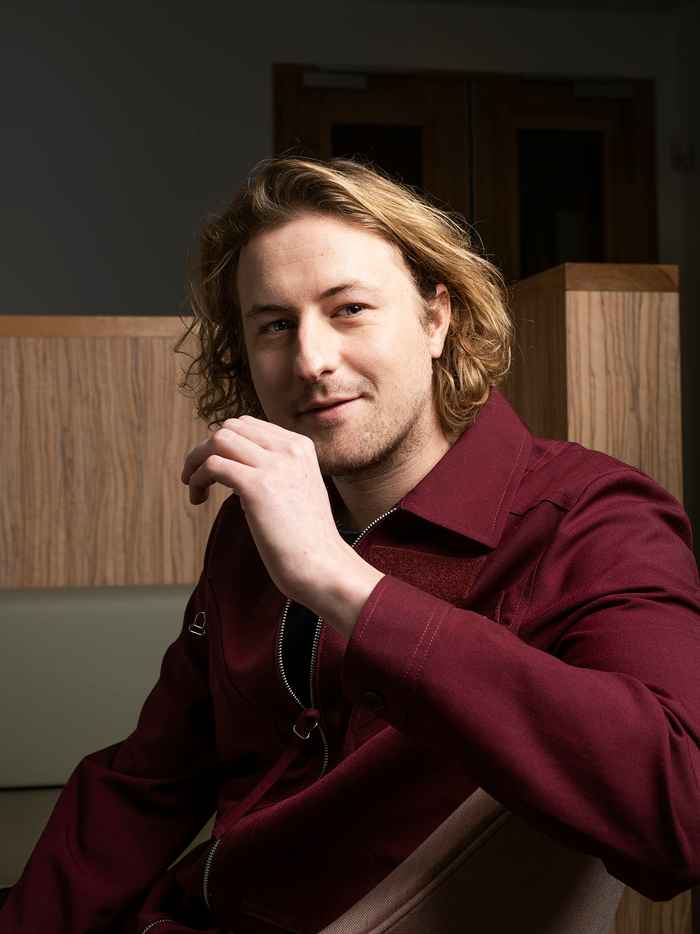Wouter van Herwaarden

Who: Wouter van Herwaarden (1990)
Studied: Bachelor's in Art History, Master's in Museum Studies.
First job: delivering magazines.
Favourite place at the UvA: Art History was previously housed in the Art Historical Institute at Herengracht 286, a striking, dark building abundant in natural stone. Inside, there was an archive filled with all sorts of pictures of art works. No one ever went there and it positively reeked; it was an area that was basically rendered obsolete with the advent of the Internet. Very cool.
Essential: art and literature
Wouter van Herwaarden (1990) is an alumnus and holds a Bachelor's in Art History and a Master's in Museum Studies. With an artist for a mother, Wouter learned to love museums at a tender age. It was perhaps a natural progression for him to study art history at the UvA. He had no trouble completing his degrees, and not long after graduation – following a successful exhibition organised with a friend – he decided to open a pop-up gallery. Under the name ‘Galerie Fleur en Wouter’, the gallery is organising an exhibition with, among others, VOX-POP, the creative space at the UvA, focusing on the Nieuwmarkt district during the anti-gentrification uprising in the 1970s. Wouter will begin teaching the ‘Current Events in Art’ course at the Akademie Vogue in the near future.
What makes Museum Studies so special?
'The Master's programme in Museum Studies focuses on the sociological approach of museums. You study the role of museums in society. Museums can uplift people. They not only brighten neighbourhoods, but also serve as a marketing tool for a country. A country with a lot of museums is a country that is doing well. Art and museums are inherently connected, which means the programme is also an investigation into the significance of art. That significance definitely exists. Art offers you a different perspective on the world; it teaches you to understand other people. And by looking at a work of art, I myself sometimes feel understood, too. It is special to see something as very beautiful or to be affected by something without being able to describe exactly why.'
Art offers a different perspective on the world.
Was there room for any artistic freedom of your own?
‘Absolutely. I was able to apply a lot of creativity. During my Art History Bachelor programme, for instance, I came up with the exhibition Lachen met Wouter, ['Laughing with Wouter'] on art and humour for one of my courses. I arranged the works of art based on the type of humour. The goal was to attract young people to museums by using art to make them laugh.’
It is quite special to find yourself affected by something without being able to describe exactly why.
What impact do you hope to have on the art world?
'My dream is to teach at the Rietveld Academy, to help young artists establish their careers, by explaining to them how the art world works and how to deal with it. It isn't easy in the art world, but many of my fellow students have managed to find really exciting jobs. In January, I will start teaching at the Akademie Vogue, a programme for people interested in becoming a stylist. I will be teaching the ‘Current Events in Art’ course, where I will take groups of students around the city and go to exhibitions to see what is happening in the art world. It's really cool. I'm also extremely pleased with our pop-up gallery, ‘Fleur en Wouter’, through which we organise exhibitions at a variety of locations. Our goal with the gallery is to introduce young people to art and to get them to want to buy art. We do this by keeping works affordable and organising exhibitions around themes that appeal to young people. I also work at another gallery – OD Gallery – that sells street art, and I occasionally write about art for Vice Magazine. In the past few months, I have been working on an essay about Jugendstil silver for a museum in Wiesbaden in Germany. A 90-year-old man named Ferdinand Wolfgang Neess donated his extensive collection of Jugendstil works to the museum. Together with Edwin Becker from the Van Gogh Museum, where I did my work placement, I am writing about the silver in the collection for the catalogue. It is quite a prestigious assignment; I would like to do more of this sort of thing. Everything I am doing at the moment is different and so much fun; I enjoy the variety.'
I often think about the things that lecturers said, and I still keep in touch with some of them.
Did you enjoy your time at the UvA? How do you feel when you look back?
‘I had good lecturers during my studies, the kind that you picture having before you go to university, from an elderly professor who hobbled to the stage with a hunched back to an extremely flamboyant man. This one professor had an amazing voice and taught Italian sculpture. When he lectured, he recited every quote in the original language. Italian, French; no translation. His pronunciation was perfect, of course. To me, that is one of the best parts of going to university: all of the different types of people you meet. I often think about the things that lecturers said. I still keep in touch with many of the Museum Studies lecturers, too.’ The UvA is a huge, somewhat lumbering organisation, but one with lots of character. The old buildings are now often being renovated, but that old age is what made them so attractive. And to me, Amsterdam is the most beautiful city in the Netherlands. I love the grandeur and vast scale of the city. At the same time, it is quite small and personal. Plus, the city has the best museums in the Netherlands.’